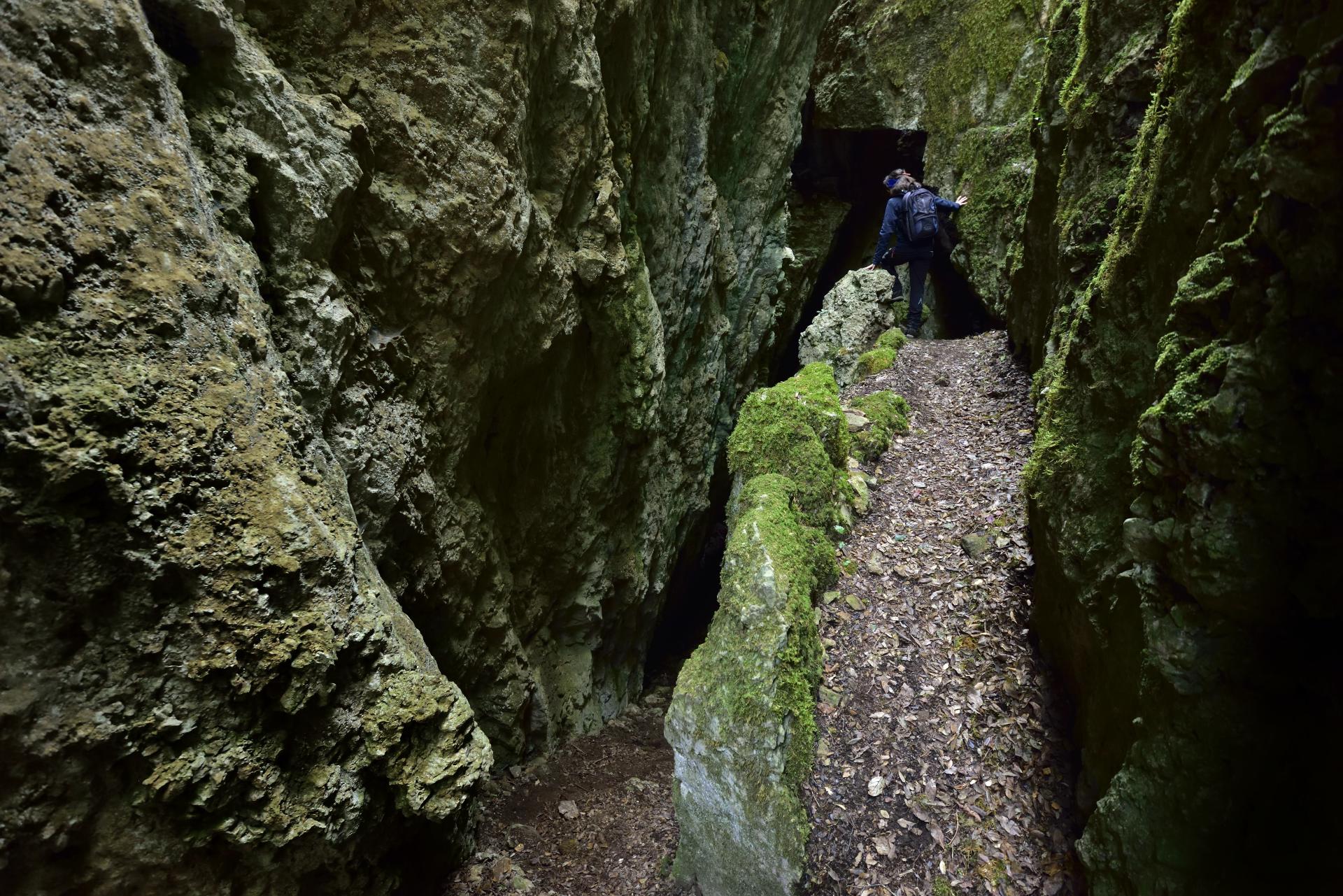The route was created as part of a collaboration between the GAL Ogliastra and the FoReSTAS Agency, with the aim of offering hikers an immersive experience in the natural and scenic beauty of the Ogliastra area. The itinerary features points of interest along every section. You can choose your starting stage and build your own customized route, traveling from north to south or from south to north. The direction of travel may change, but the quality of the landscape remains unchanged.
The path
The initial stretch of the route from Perd’e Pera (Gairo) to Tertenia stands out for its suggestive coastal path, which laps the sea between black pebbles, hidden coves and rock formations shaped by time. Along the route you will encounter wild environments and spectacular views such as that of Sa Perda Stampada.
The coastal landscape is also characterized by the famous red rocks of Ogliastra: porphyry formations sculpted by the wind, which rise in pinnacles and cliffs overlooking the sea, creating a chromatic contrast of rare intensity with the waters below, which fade from emerald green to deep blue.
The next stage, from Tertenia to Cea Arci (Ulassai), heads inland, crossing olive groves and agricultural areas and then immersing itself in thick holm oak forests. The route winds along the slopes of the Rio Corongiu, crossing the abandoned mining area of Talentinu and reaching Cea Arci, where a sheepfold guards the remains of an ancient nuraghe. The limestone and dolomitic formations here shape a harsh and fascinating landscape, marked by a long interaction between human activities and nature, today returned to a silent balance.
The following stage, from Perdasdefogu to Nuraghe S’Ulimu (Ulassai), opens up between cork oak and holm oak woods, entering a karst environment rich in joints and natural cavities, such as the deep Sa Brecca. The path alternates between shady stretches and panoramic areas, with views of the cultivated valley and the Tacchi di Ulassai, before descending to the ford of a river and climbing back up towards the archaeological sites of Nuraghe Trutturis and S’Ulimu, witnesses of a long settlement continuity. In this stretch of inland Sardinia, the journey becomes a profound exploration of landscape and history, in a continuous balance between the shaping force of nature and the stratified memory of man.
The itinerary concludes with a final stage that, starting from the Nuraghe S’Ulimu, winds through Mediterranean scrub, wetlands, and scenic panoramic viewpoints, eventually reaching the Sant’Antonio area, near a welcoming destination for hikers.
From Perdasdefogu to Ulassai S'Ulimu Nuraghe
The excursion begins within the town of Perdasdefogu along a paved road that crosses a picturesque cork oak and holm oak forest. After this initial stretch, the route follows a trail winding through the woods, leading to the Perdasdefogu speleology school, managed by the Gruppo Grotte Ogliastra, located at the Center for Sustainable Environmental Education (CEAS) in the locality of Is Tapparas, where deer sightings are possible.
In this area, there are several rock fissures, among which Sa Brecca stands out as the most interesting and fully explorable: with a depth of 40 meters and a linear development of 70 meters, it represents a stop of particular naturalistic, environmental, and scenic value.
From the same locality, splendid views open up over the cultivated valley and the southern area of the Tacchi di Ulassai, offering captivating panoramas.
The path continues downhill along a trail leading to a river ford (Riu Su Luda).
After crossing the watercourse, the route includes some climbs on paved sections alternated with dirt roads until reaching Nuraghe Trutturis, which introduces the archaeological context of the area.
The itinerary concludes at the Podda sheepfold and an important archaeological site that preserves significant remains, including several Giant’s Tombs, Domus de Janas, and the evocative Nuraghe S’Ulimu.

